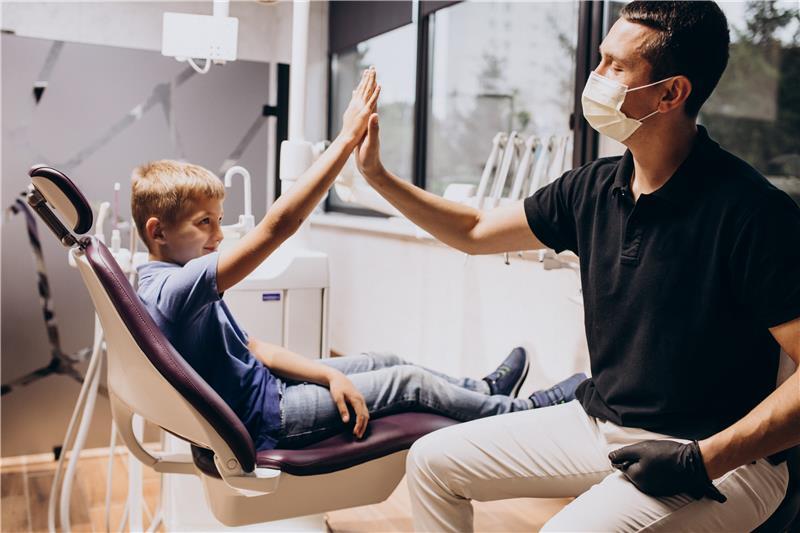In today’s fast-paced world, technology is revolutionizing every industry—including dentistry. Digital dentistry is no longer a luxury but a necessity for dentists looking to enhance patient care, streamline workflows, and stay ahead of the competition.
From AI-driven diagnostics to 3D printing and CAD/CAM technology, modern innovations are reshaping the way dental professionals approach treatment planning, restorations, and patient communication.
This guide explores how embracing digital tools can elevate your practice, improve accuracy, and enhance patient satisfaction. Whether you’re a locum tenens dentist or managing your own practice, these insights will help you navigate the future of dentistry.
What Is Digital Dentistry?
Digital dentistry refers to computer-assisted dental technologies that replace traditional methods with more accurate, efficient, and patient-friendly solutions. Instead of relying on outdated techniques, modern dental professionals leverage AI, 3D imaging, and cloud-based tools to enhance precision and improve treatment outcomes.
Key Benefits of Digital Dentistry:
✔ Greater Accuracy: Digital impressions and AI diagnostics reduce errors.
✔ Improved Efficiency: Faster workflows mean less chair time and more patient throughput.
✔ Enhanced Patient Experience: Digital tools make procedures quicker, less invasive, and more comfortable.
✔ Competitive Advantage: Tech-savvy patients prefer modern, high-tech practice
Top Digital Technologies Reshaping Dentistry
1. AI-Powered Diagnostics & Treatment Planning
Artificial intelligence is revolutionizing dental diagnostics, allowing dentists to detect issues earlier and more accurately. AI-powered software can analyze X-rays, intraoral scans, and patient records to flag potential concerns like tooth decay, periodontal disease, and oral cancer.
✔ Predictive Analytics: AI suggests personalized treatment plans based on a patient’s medical history.
✔ Enhanced Detection: AI tools improve diagnostic accuracy, reducing the risk of human error.
💡 Example: AI-assisted radiology tools have been shown to increase diagnostic accuracy to 96%, ensuring early detection and better patient outcomes.
2. CAD/CAM Technology for Same-Day Restorations
CAD (Computer-Aided Design) and CAM (Computer-Aided Manufacturing) allow dentists to create custom crowns, veneers, and inlays in a single visit. Traditional methods require multiple appointments and temporary restorations, but CAD/CAM technology streamlines the entire process.
✔ In-House Milling: Eliminates the need for third-party dental labs.
✔ Faster Treatment: Patients receive high-quality restorations in just a few hours.
💡 Imagine designing and milling a custom dental crown in your own office while the patient waits—this is now a reality with CAD/CAM systems.
3. Digital Impressions: Goodbye, Messy Molds!
Traditional impression trays are uncomfortable, messy, and prone to errors. Digital intraoral scanners capture detailed 3D images of a patient’s teeth within seconds, eliminating the need for physical molds.
✔ More Comfort for Patients: No more gag reflex or messy materials.
✔ Higher Precision: Digital scans improve restoration accuracy, reducing remakes.
✔ Seamless Integration: Digital files connect directly to CAD/CAM and 3D printing systems.
4. 3D Printing for Faster, Cost-Effective Dental Solutions
The rise of 3D printing in dentistry is revolutionizing the fabrication of:
✔ Surgical guides
✔ Temporary crowns and bridges
✔ Custom dentures and orthodontic aligners
This cost-effective technology reduces reliance on third-party labs, making it easier to create customized, perfectly fitted dental appliances in-house.
💡 Pro Tip: Even small dental practices can integrate 3D printing for faster, more affordable restorations.
Challenges of Adopting Digital Dentistry
While digital transformation offers unmatched efficiency and precision, integrating new technology comes with challenges:
✔ High Initial Investment: Advanced tools like AI software, CAD/CAM machines, and 3D printers require significant upfront costs.
✔ Training & Learning Curve: Staff must undergo proper training to maximize the benefits of digital tools.
✔ Data Security & Compliance: Protecting patient records in a digital system requires robust cybersecurity measures.
How to Overcome These Challenges:
💡 Start with small changes, such as digital impressions or AI-assisted diagnostics, before committing to a complete practice overhaul.
How to Transition Your Practice to Digital Dentistry
Thinking about modernizing your practice? Here’s a step-by-step approach to going digital:
✔ Assess Your Needs: Identify areas where technology can improve efficiency and patient care.
✔ Invest in Scalable Tech: Start with affordable digital solutions before adopting larger systems like CAD/CAM or 3D printing.
✔ Train Your Team: Ensure your staff is well-equipped to handle new tools effectively.
✔ Educate Your Patients: Highlight your tech-driven approach to build trust and differentiate your practice from competitors.
The Future of Dentistry: Advancing Your Career in a Digital Era
As technology continues to shape the dental industry, professionals who embrace digital innovations will find themselves in high demand. Whether you’re looking for new opportunities in a modern practice or want to work as a locum tenens dentist, staying updated on the latest advancements is key.
At Link Health Staff, we connect skilled dentists with top healthcare facilities that leverage cutting-edge technology to enhance patient care. If you’re ready to take the next step in your career and work in a high-tech, forward-thinking environment, apply today!
🔗 Browse Dentist Jobs Now






